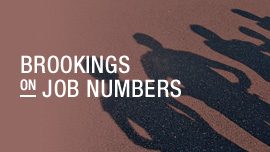The latest BLS employment report contained good news about job gains in March. Private payrolls increased 192,000 in March, hitting a total of more than 116 million and finally erasing the steep payroll losses of the Great Recession. For the first time since December 2007, private U.S. payrolls reached a new all-time peak. Since hitting a low in February 2010, private-sector payrolls have increased in 49 successive months, rising by a total of 8.9 million. Revisions in earlier BLS estimates of payroll gains in January and February also added 37,000 to total gains previously estimated for those months.
Nonetheless, public plus private payrolls remain more than 400,000 below their pre-recession peak. That’s because government payrolls sank. In the 49 months that private-sector employment increased, public payrolls fell 627,000, or about 2.8%. Government employment remained unchanged in March, and public payrolls edged down 19,000 over the past year. A shrinking public sector is one of the headwinds slowing the job market recovery. Fortunately, this headwind seems to be weakening.
Private employment rose in retail trade, business services, and construction in March. The gains in construction continue to be modest in view of the sharp payroll losses construction companies experienced in the recession. In spite of three years of employment gains averaging about 14,000 a month, construction payrolls remain more than 1.5 million below their pre-recession level. Employment gains in the health care sector rebounded in February and March after two months of unusual weakness in December and January.
Private business services have been a major source of job growth since the recovery began. The March payroll numbers saw a continuation of this trend. Half the payroll gains in the sector occurred in the temporary help services industry, which added more than 28,000 jobs in March. Recent robust job growth in temporary help services suggest private sector payroll gains will continue. Employers’ willingness to add temporary workers ordinarily signals future strength in overall employment demand. The latest numbers from the BLS employer survey show overall payroll growth is fast enough to gradually reduce the nation’s unemployment rate. Employment growth between 70,000 and 90,000 should be sufficient to keep the unemployment rate roughly unchanged. A faster pace of job gains will eventually reduce the level and rate of unemployment.
The household survey offers additional evidence of labor market improvement. The number of survey respondents who say they have a job increased 476,000 in March, capping a 6-month period in which estimated employment gains in the household survey averaged 245,000 a month. This is considerably faster than the pace of job growth reported in BLS’s employer survey. Over the past year, however, employment gains in the two surveys have been similar.
In spite of the large reported employment gains in the household survey, the number of unemployed workers and the unemployment rate were virtually unchanged in March. The labor force grew by more than 0.5 million in the month, pushing the participation rate up 0.2 points to 63.2%. The participation rate increase seems puzzling in light of the halt in extended unemployment benefits that occurred in January. I expected to see a drop in the participation rate of extended benefit recipients when their benefits were cut off. One reason some of the long-term unemployed continue to look for work is the obligation that they actively seek employment in order to qualify for benefits. When their UI benefits cease, workers who are very discouraged by their job prospects may stop looking. Contrary to my expectation, the participation rate increased 0.4 percentage points between December and March. This suggests that many jobless workers may have become more optimistic about their chances of finding a job.
The Brookings Institution is committed to quality, independence, and impact.
We are supported by a diverse array of funders. In line with our values and policies, each Brookings publication represents the sole views of its author(s).



Commentary
Private Sector Payrolls Finally Top Pre-Recession Peak
April 4, 2014